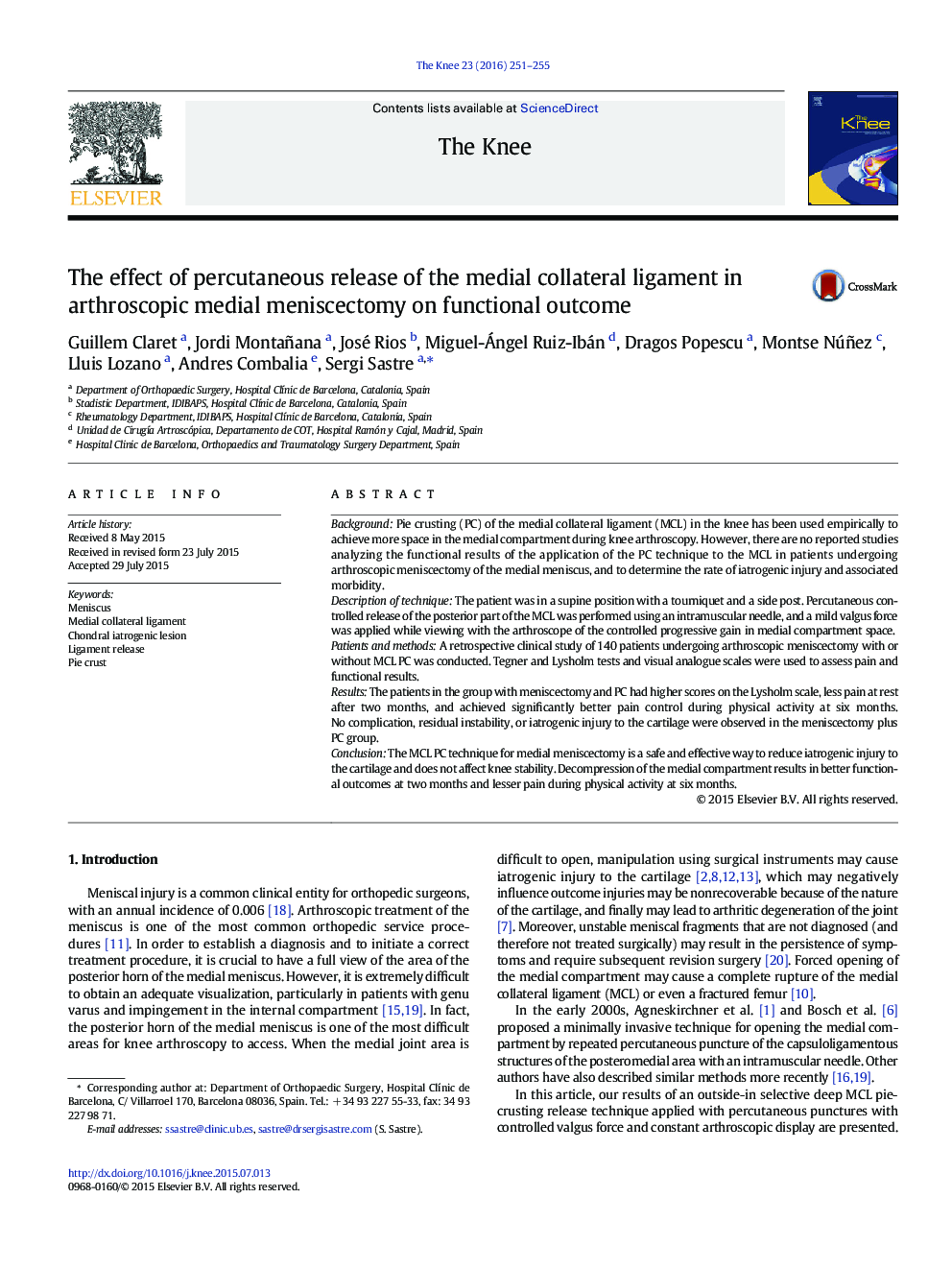| Article ID | Journal | Published Year | Pages | File Type |
|---|---|---|---|---|
| 4077288 | The Knee | 2016 | 5 Pages |
•Percutaneous release of the medial collateral ligament in arthroscopic medial meniscectomy with functional results analysis.•The use of PR of the MCL allows a better visualization of the medial meniscus.•The use of PR of the MCL does not affect the knee stability.•The use of PR of the MCL avoids iatrogenic lesions of the cartilage
BackgroundPie crusting (PC) of the medial collateral ligament (MCL) in the knee has been used empirically to achieve more space in the medial compartment during knee arthroscopy. However, there are no reported studies analyzing the functional results of the application of the PC technique to the MCL in patients undergoing arthroscopic meniscectomy of the medial meniscus, and to determine the rate of iatrogenic injury and associated morbidity.Description of techniqueThe patient was in a supine position with a tourniquet and a side post. Percutaneous controlled release of the posterior part of the MCL was performed using an intramuscular needle, and a mild valgus force was applied while viewing with the arthroscope of the controlled progressive gain in medial compartment space.Patients and methodsA retrospective clinical study of 140 patients undergoing arthroscopic meniscectomy with or without MCL PC was conducted. Tegner and Lysholm tests and visual analogue scales were used to assess pain and functional results.ResultsThe patients in the group with meniscectomy and PC had higher scores on the Lysholm scale, less pain at rest after two months, and achieved significantly better pain control during physical activity at six months. No complication, residual instability, or iatrogenic injury to the cartilage were observed in the meniscectomy plus PC group.ConclusionThe MCL PC technique for medial meniscectomy is a safe and effective way to reduce iatrogenic injury to the cartilage and does not affect knee stability. Decompression of the medial compartment results in better functional outcomes at two months and lesser pain during physical activity at six months.
